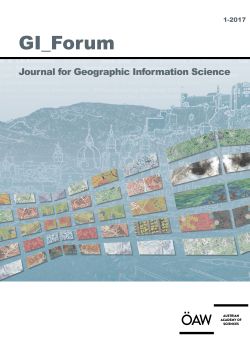
GI_Forum 2017, Volume 5, Issue 1, pp. 69-78, 2017/06/30
Journal for Geographic Information Science

Glacially formed slopes in the Mondsee catchment close to Koppl, Austria, expose high hydrological dynamics after intense rainfall events. We use Electrical Resistivity Tomography (ERT) to identify the subsurface geological structure relevant for springs causing surface runoff during storm events at times of fully saturated soils. To identify the horizontal and vertical distribution of subsurface structures, we use 26 parallel ERT profile lines with 6m spacing, and 4m electrode spacing, over a total length of 88m. After 3D inversion, the electrical resistivity values in the generated model comprise 10 to 1132 Ωm. Sections with resistivity values between 10 and 100 Ωm, classified as water-saturated material, dominate the uppermost 3m of the model. Highest resistivity (>200 Ωm) materials are classified as moraine material, which forms the steepest part of the slope covered by a coppice belt. Linear features with lowest resistivity values show congruencies with streams from runoff modelling and crop-out of springs. Finally, the model enables the identification of aquifers and aquicludes relevant for further 3D hydrological modelling.
Keywords: subsurface modelling, hydrogeology, surface runoff